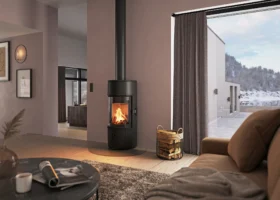
Use code BUILD for 20% off
Book here!
Use code BUILD for 20% off
Book here!Any renovation project involves a wide range of considerations and decisions to ensure a successful end result. Work to period homes bring additional layers of complexity, however, so it’s important to fully understand the ins and outs before committing yourself to such an undertaking.
The most important thing to grasp is that period homes behave differently. They’re comprised of materials that tend to be much closer to their natural state than those used now – generally meaning that they are more flexible.
Most critically, they, and the construction methods used, deal with moisture in a completely different way to today’s dwellings. There are no vapour barriers keeping water out of the structure. Instead, it’s absorbed by the building fabric and dries via evaporation. This process enables an equilibrium, resulting in dry, thermally-efficient buildings (if they’re left to operate effectively).
Unfortunately, it’s very easy to upset this equilibrium by introducing modern, impermeable materials that interfere with the ability to dry by evaporation (such as silicone renders). The consequences of this can be severe – many 20th-century renovations caused catastrophic damage because the importance of this was just not understood. Even today, when we have a much better understanding of the mechanisms involved, these mistakes are still being made.
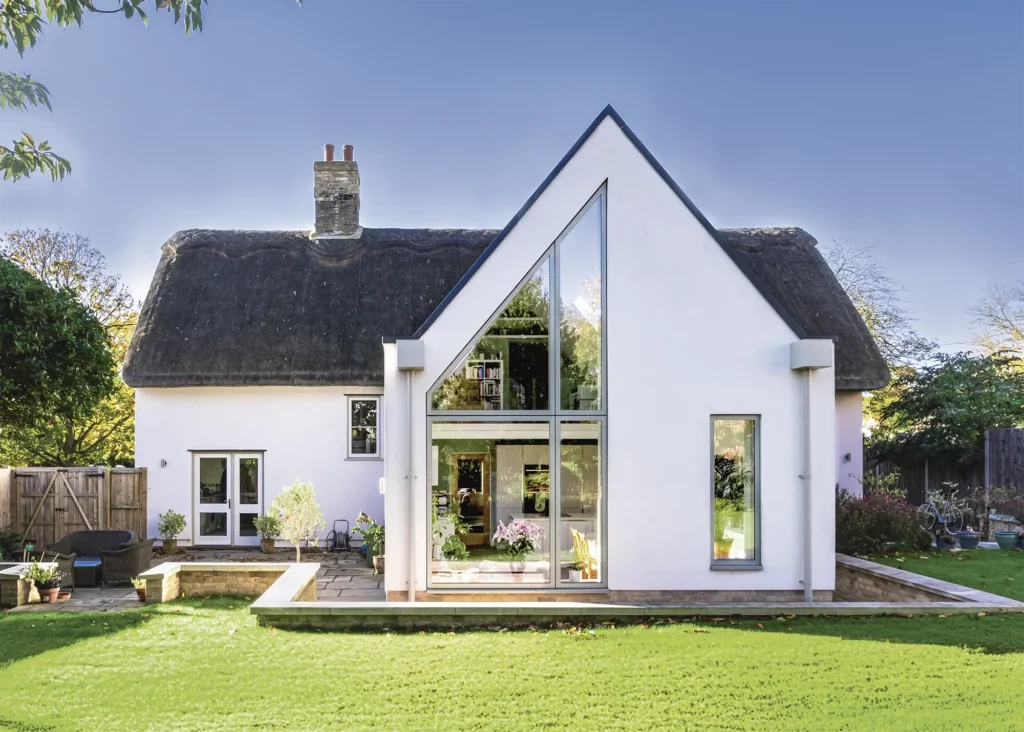
This thatched cottage in Cambridegshire was formerly four small agricultural buildings, altered and adapted over time to create one larger building. Alongside a striking double-height extension, Snell David Architects updated the house with new timber windows and external wall insulation to enhance its efficiency
Before setting out on a renovation of an old building, it’s essential that you gain a reasonable understanding of how the home works. Even if you don’t intend to be hands-on (more on this further down), you will need to be able to specify appropriate materials and techniques, select the right contractors and trades, and manage and them effectively. I strongly recommend attending a short course to arm yourself with the necessary background knowledge.
A period home’s structure is old. That means that it has been through a lot of wear and tear, might have suffered some quite serious damage at some point in its history, and will inevitably have been altered – often many times.
As a result of this, any interventions or changes must be treated with caution. Parts of the building may have deteriorated over time and no longer have the capacity to bear additional loads. Past alterations might have adjusted the way the structure works, too, making load paths difficult to predict – creating unexpected responses or damage following seemingly minor alterations.
It is always safe to avoid any significant structural alterations and to avoid placing extra loads on historic fabric – any additions to the building should ideally be self-supporting. If this is not possible, it’s vital to obtain a careful structural assessment by a structural engineer specialising in historic buildings, and having a strong understanding of how they work (not always the same thing!).
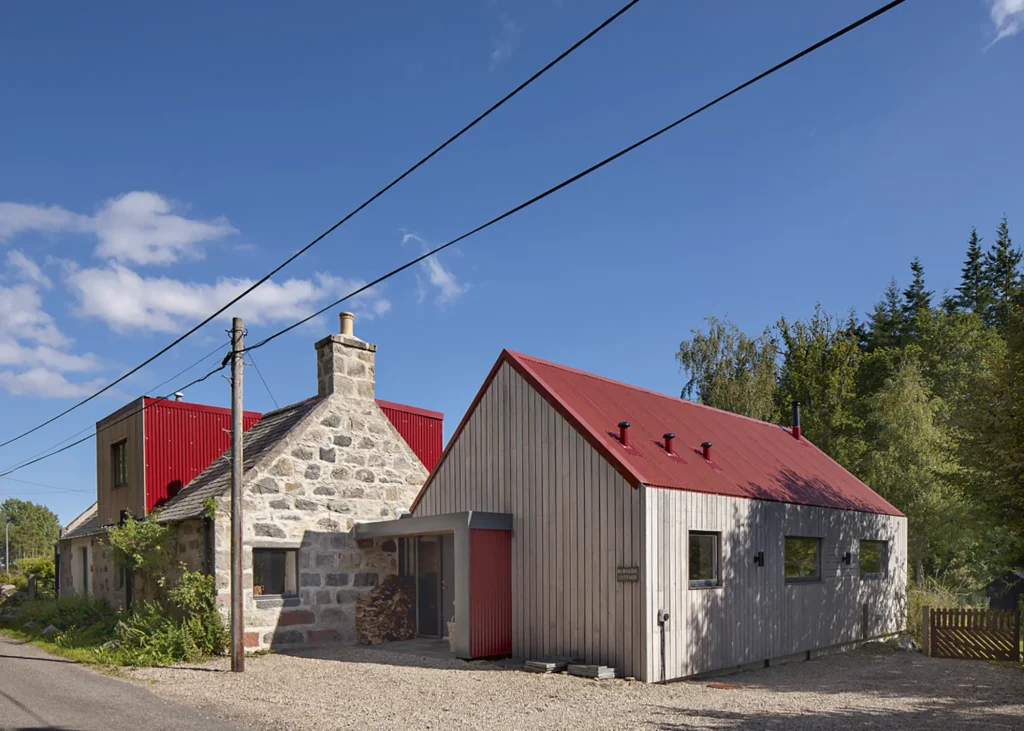
Hyve Architects were approached by the owners of this rural cottage in Aberdeenshire, to help them renovate, extend and reconfigure its interior layout. The sensitive project embraces the building’s original stone exterior while adding a contemporary touch with corrugated red metal and timber cladding
However careful your planning and thorough your initial assessments are, this type of project will nearly always throw up something unexpected. As so much of the structure is hidden, there will always be some parts that cannot be seen until it has been stripped back. Any particularly nasty bits are likely to have been hidden away in the past, too. It’s not unusual to have to make fundamental decisions very quickly mid-project, so it is advisable to have a well-qualified expert on hand at short notice.
Having said all that, period buildings are constructed to be extremely resilient and have a structural soundness that can be quite surprising to those familiar with modern levels. They have, after all, already survived for hundreds of years!
CLOSER LOOK Getting hands-on
|
Many period homes are either listed or in a conservation area. This can make a considerable difference to what you are allowed to do to the building, particularly any significant changes you wish to make. It will certainly add to the complexity of the planning process and require you to provide a lot more information in support of your developments.
Engaging with the local conservation officer as early as possible should be beneficial to everyone in developing a scheme that works for all parties. Unfortunately, this isn’t always easy. Sometimes it can be impossible to make changes to an older home, or prohibitively expensive – so it’s wise to look forward before investing.
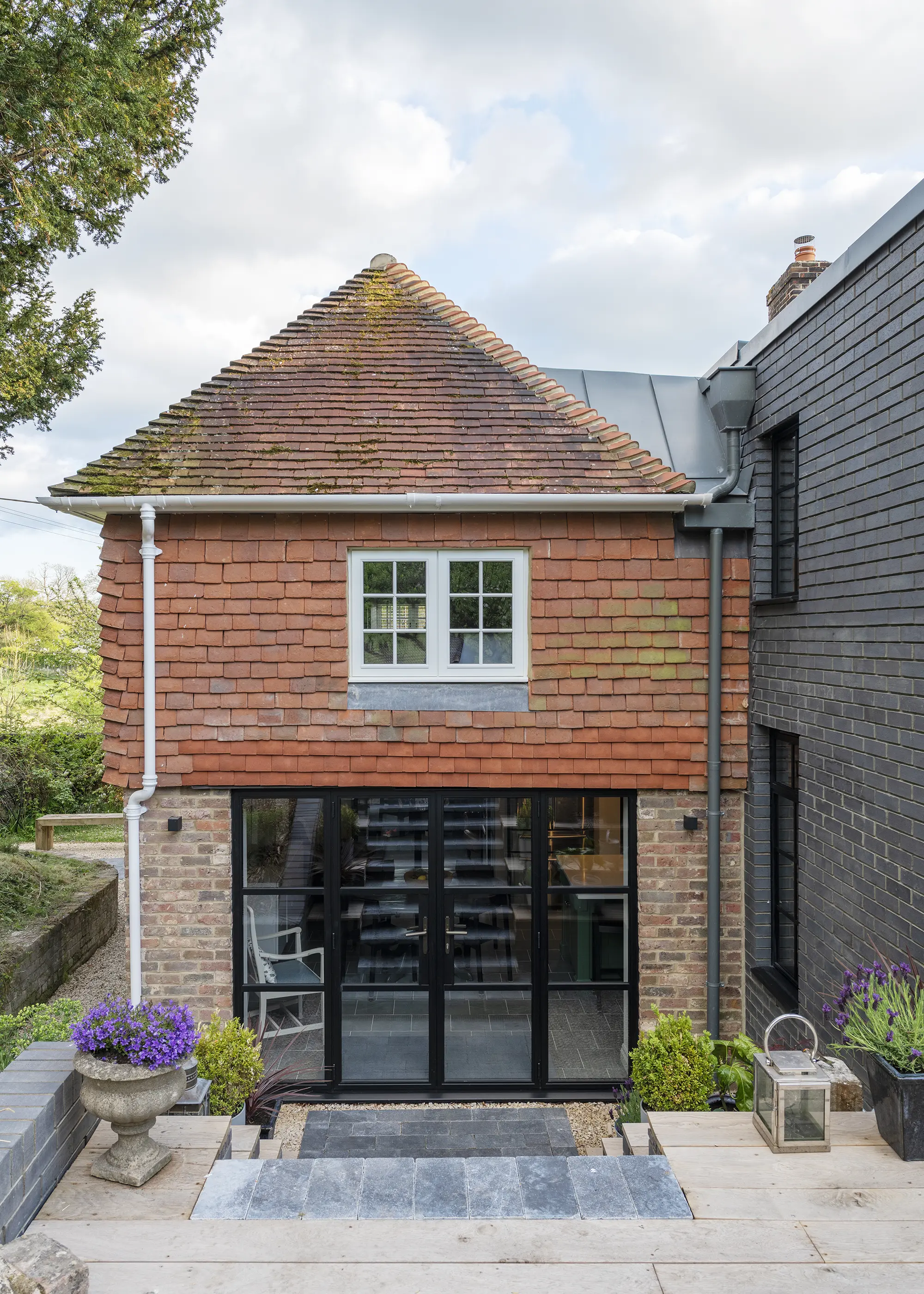
As part of their grade II listed home renovation, Mark Camillin and Liam Denny replaced the original home’s single-glazed windows with conservation double-glazed hardwood models, alongside installing heritage-style aluminium bifolds and French doors. Photo: Richard Downer
Understanding the implications of these heritage protections is vital if you are to get the most out of the renovation. It’s good to know you are properly satisfying the requirements because the consequences of non-compliance can be extreme. Listed building legislation is part of criminal law, rather than planning, with various sanctions for breaches.
A strange quirk of the legislation transfers the liability for any unauthorised alterations to the purchaser when a listed building is sold. This is an important thing to look out for when buying. After you have completed your project, the same issue could make your house very difficult to sell if you have carried out any unauthorised work yourself.
Of course, there are many period buildings that are neither listed nor otherwise protected. Many of these still have heritage value, sometimes considerable. Anybody contemplating a renovation will be drawn in by the home’s innate charm and character. So, to achieve the best result, these aspects need to be considered and protected. A remarkable number of small, detailed decisions have to be made to protect and retain all the little features that represent the character and value of the property.
Budgeting for a period home renovation project can be quite complicated. This is partly because of the range of unconventional materials and skills that need to be employed throughout. Another factor is the difficulty in developing a complete vision of the outcome when the house is in an unpromising state. The home’s full potential is likely to only be revealed during the project, once things really start coming together.
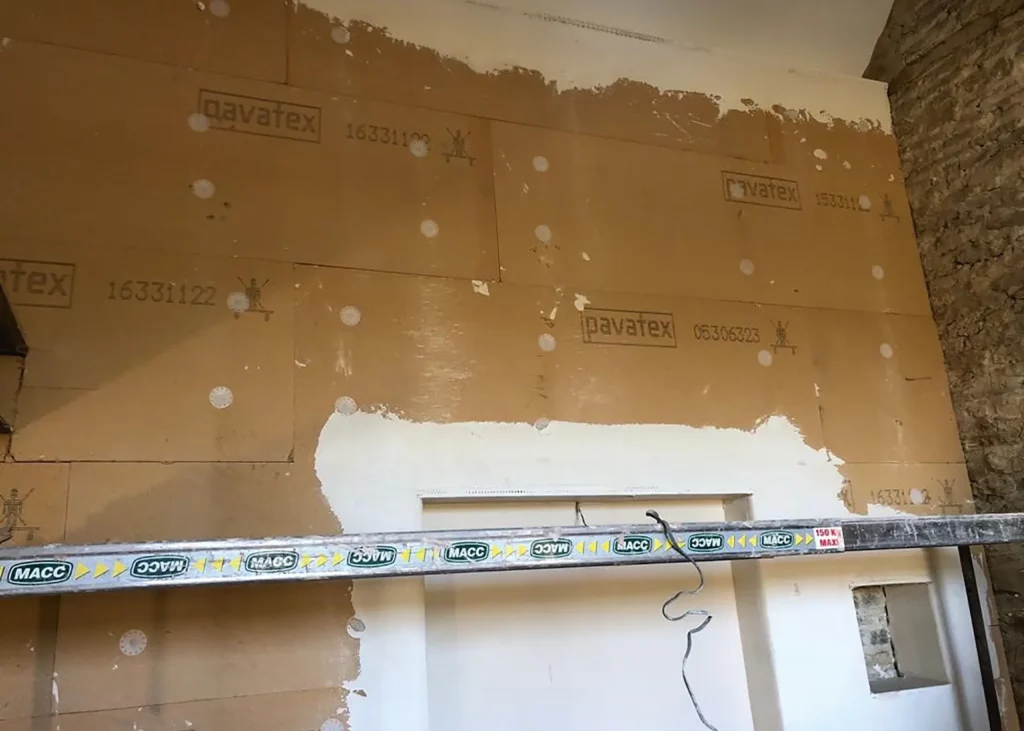
Winner of the 2023 Build It Award for Best Insulation, Isolair Multi is a wood fibre insulation board from Pavatex, available from Unity Lime. It is supplied in an easy-to-install tongue-and-groove profile and can be used in retrofit applications, without the need for additional breather membranes
Any successful scheme starts with a realistic ballpark figure. To develop this, you are bound to need some help. A qualified surveyor or expert will tell you whether you can afford to take the project on with the money you have available, and identify whether the expected end result is actually worth the investment. Don’t expect that to be a hard and fast cost plan, though. You must have a contingency fund (usually 20%), that you are ready and able to spend if necessary.
If your particular circumstances allow, it is best to be reasonably flexible about both budget and schedule as period home renovations can throw unexpected spends and delays into the mix. Above all, don’t promise yourself, or anybody else, that you’ll be in by Christmas!
